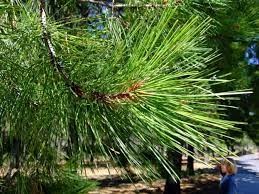Secwepemc name: s7átqwlip
The cones were gathered from the ground in November. They were dried out, and the seeds were shaken or picked out and eaten raw as a snack food. The inner bark and cambium tissue of this pine was eaten, like that of lodgepole pine. The wood is also often used as a fuel, and the powdery, rotten wood is used for smoking buckskin.
The boughs or dried needles were used as mattressing by campers, and as floor covering, and the needles were sometimes used in pit cooking, to surround and protect the food being cooked. The needles were used as insulation for cellars, food caches and underground storage pits, and when dry, were used as tinder. They could also be used to make snow melt faster in doorways. The fresh boughs are used for cleansing the body when one is sweat-bathing. A solution of the boughs was used to make a cleansing medicinal wash for newborn babies, as recounted by Palmer (1975: 52). The needles of this and other pines were sometimes mixed with other plants to make soaking solutions for arthritis and other ailments.
Ecological requirements
Ponderosa pine woodlands are savannah-like ecosystems characterized by widely spaced ponderosa pine trees with an understory of grasses and shrubs. Ponderosa pine trees under some conditions can grow so closely together as to create a dense canopy with few grasses and forbs in the understory, taking on the appearance and function of a true forest. Under other conditions, the pine trees can be widely spaced allowing a dense understory of herbs and shrubs, creating a park-like appearance that is classified as rangeland.
![]()

